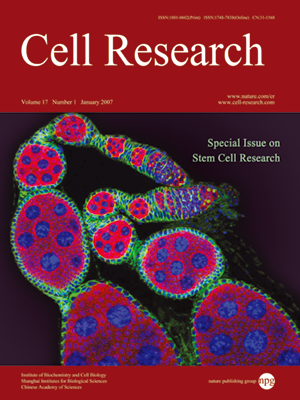
Volume 17, No 1, Jan 2007
ISSN: 1001-0602
EISSN: 1748-7838 2018
impact factor 17.848*
(Clarivate Analytics, 2019)
Volume 17 Issue 1, January 2007: 42-49
REVIEWS
Nanog and transcriptional networks in embryonic stem cell pluripotency
Guangjin Pan1, James A Thomson1,2,3,4
1The Wisconsin National Primate Research Center, University of Wisconsin-Madison, 1220 Capitol Court, Madison, WI 53715-1299,
USA; 2The Genome Center of Wisconsin, 425 Henry Mall, Madison, WI 53706, USA; 3WiCell Research Institute, PO Box 7365,
Madison, WI 53707-7365, USA; 4The Department of Anatomy, University of Wisconsin-Madison Medical School, 470 N. Charter
Street, Madison, WI 53706-1509, USA
Correspondence: Guangjin Pan(gpan@primate.wisc.edu)
Several extrinsic signals such as LIF, BMP and Wnt can support the self-renewal and pluripotency of embryonic stem (ES) cells through regulating the "pluripotent genes." A unique homeobox transcription factor, Nanog, is one of the key downstream effectors of these signals. Elevated level of Nanog can maintain the mouse ES cell self-renewal independent of LIF and enable human ES cell growth without feeder cells. In addition to the external signal pathways, intrinsic transcription factors such as FoxD3, P53 and Oct4 are also involved in regulating the expression of Nanog. Functionally, Nanog works together with other key pluripotent factors such as Oct4 and Sox2 to control a set of target genes that have important functions in ES cell pluripotency. These key factors form a regulatory network to support or limit each other's expression level, which maintains the properties of ES cells.
Cell Research (2007) 17:42-49. doi:10.1038/sj.cr.7310125; published online 9 January 2007
FULL TEXT | PDF
Browse 2107


